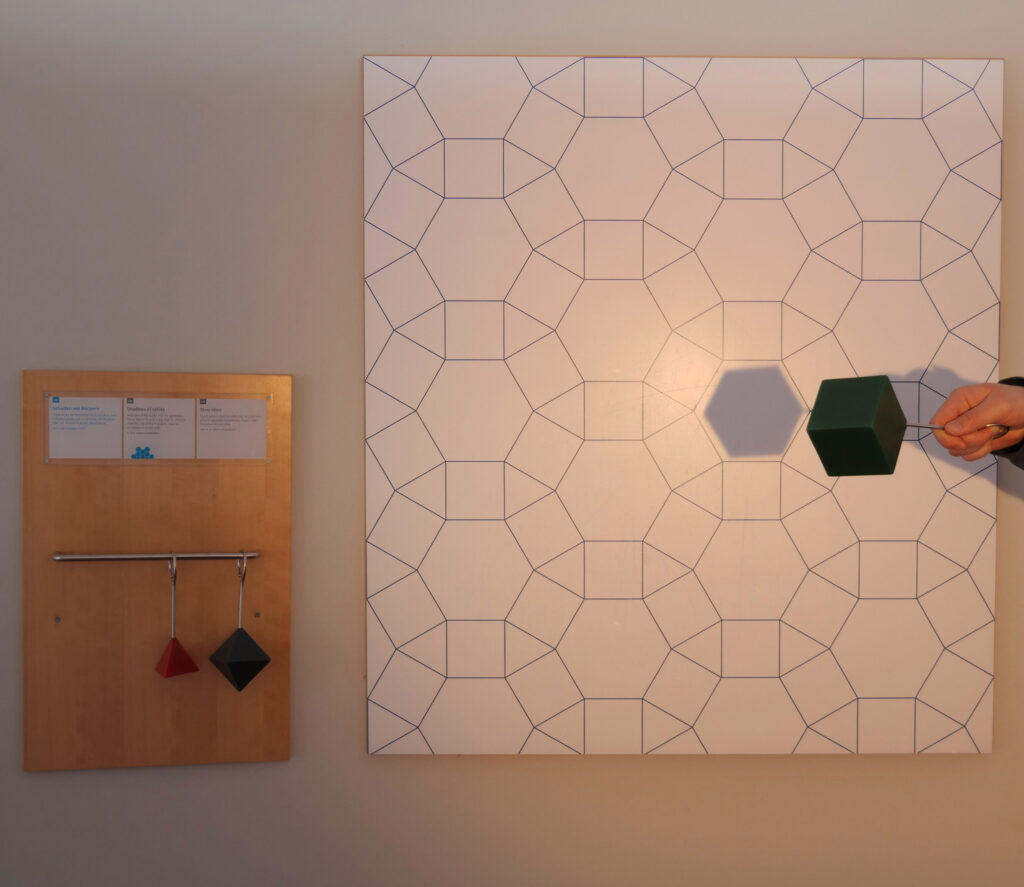Shadows of Objects
Surely you have also played with shadows. What shapes can be created with one hand in this way? Shadow theatre is about exactly that. This question is also very interesting from a mathematical point of view: Given is a geometric three-dimensional body. What shadow can this cast with different rotations in relation to the light source?
A cube, for example, can cast a square, but also the shadow of a regular hexagon. A sphere, on the other hand, always casts the shadow of a circle. What shadows can a given triangle cast? This is the subject of the exhibit “All triangles are equal“. After some trial and error, you realise that any triangle can cast the shadow of an equilateral triangle (with suitable rotation relative to the light source).



![Rendered by QuickLaTeX.com \[\pi\begin {pmatrix} x\\ y\\ z\end {pmatrix} =\begin {pmatrix} x\\ y\\ 0\end {pmatrix} .\]](https://erlebnisland-mathematik.de/wp-content/ql-cache/quicklatex.com-2c6c723f672b13fa1944dfc90ee4c96d_l3.png)